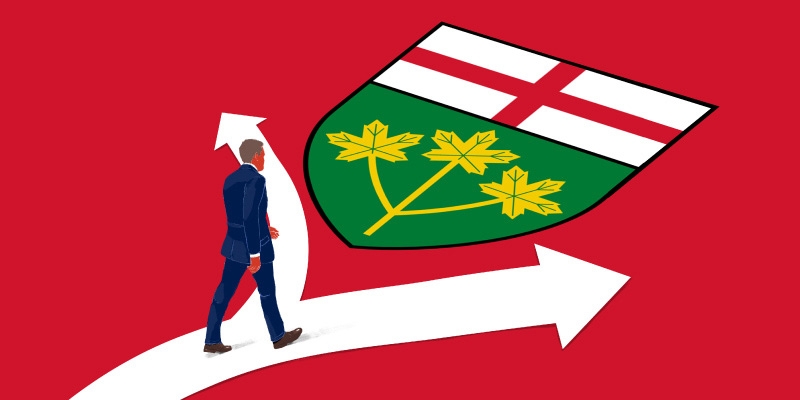A Turning Point or More of the Same? Ontario's Fiscal Choices in Budget 2019

As the Ford government approaches its first full budget, it must decide how to confront the $13.6 billion deficit it faces, as well as the stock of public debt forecasted to reach $346 billion this year. There is nothing new about Ontario’s difficult fiscal circumstances—the province has been running budget deficits for over a full decade. The question to be answered in this year’s budget is whether the new government will employ a similar fiscal strategy as its predecessors or, instead, chart a new path that can help bring fiscal sustainability and prosperity to Ontario.
Why have recent deficit elimination efforts been unsuccessful? In recent years, the provincial government has employed a passive and slow approach to deficit reduction. The strategy has consistently been to slightly moderate spending growth while hoping for revenue growth (partly from tax increases) to grow quickly enough to shrink the deficit over time.
This approach has not been successful. Ontario has remained in a deficit position for the past decade. Public debt has climbed rapidly and the provincial economy has been undermined by elevated tax rates. As the 2019/20 budget approaches, the new government must decide whether to take a similar approach to its predecessors, or take a fundamentally different approach to deficit reduction and tax relief such as has been employed successfully in other jurisdictions across Canada in recent history.
In the 1990s, governments of all political stripes across the country were able to eliminate large deficits by moving decisively on spending—reforming and reducing expenditures in nominal terms to eliminate the deficit over a 2–3 year period, while creating the fiscal room for substantial and badly needed tax relief. We calculate the extent of spending restraint or reductions that would be needed over the next two years for Ontario to return to a balanced budget, while also considering what would be needed to create fiscal room for substantial tax relief.
We find that achieving a balanced budget over the next two years without any tax relief is a singularly unambitious objective. It could, in fact, essentially be achieved by holding nominal spending flat over the next two years.
Achieving a balanced budget on this timeline while introducing tax relief would require a more ambitious approach to expenditure reduction. For instance, to reach a balanced budget while moving to a single-rate personal income tax and corporate income tax rate of 10 percent (such as prevailed in Alberta from the mid-1990s until 2015), Ontario would need to reduce nominal program spending by 7.8 percent over the next two years. To go further still and build one of the most pro-growth tax regimes in North America by adopting a single-rate personal and corporate income tax of 8 percent, an aggregate program spending reduction of 9.8 percent would be necessary.
Any of these approaches would mean substantially less debt for Ontario taxpayers compared to a slow approach to deficit reduction such as has prevailed in recent years. Indeed, we show that the most ambitious approach to deficit reduction described above would result in $14.8 billion less new operating debt for Ontarians over the next two years alone, while also lightening the tax burden on businesses and residents. This would mean a smaller debt burden and lower debt interest payments for Ontarians today, as well as future generations.
Authors:
More from this study
Subscribe to the Fraser Institute
Get the latest news from the Fraser Institute on the latest research studies, news and events.



